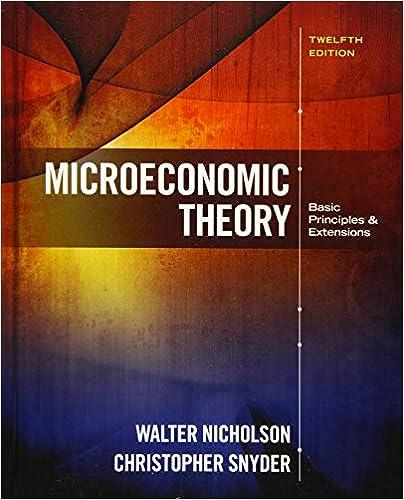Suppose that Robinson Crusoe produces and consumes fish (F) and coconuts (C). Assume that, during a certain
Question:
Suppose that Robinson Crusoe produces and consumes fish
(F) and coconuts (C). Assume that, during a certain period, he has decided to work 200 hours and is indifferent as to whether he spends this time fishing or gathering coconuts. Robinson’s production for fish is given by F 5 "lF and for coconuts by C 5 "lC, where lF and lC are the number of hours spent fishing or gathering coconuts. Consequently, lC 1 lF 5 200.
Robinson Crusoe’s utility for fish and coconuts is given by utility 5 "F # C.
a. If Robinson cannot trade with the rest of the world, how will he choose to allocate his labor? What will the optimal levels of F and C be? What will his utility be? What will be the RPT (of fish for coconuts)?
b. Suppose now that trade is opened and Robinson can trade fish and coconuts at a price ratio of pF/pC 5 2/1. If Robinson continues to produce the quantities of F and C from part (a), what will he choose to consume once given the opportunity to trade? What will his new level of utility be?
c. How would your answer to part
(b) change if Robinson adjusts his production to take advantage of the world prices?
d. Graph your results for parts (a), (b), and (c).
Step by Step Answer:

Microeconomic Theory Basic Principles And Extensions
ISBN: 9781305505797
12th Edition
Authors: Walter Nicholson, Christopher M. Snyder






